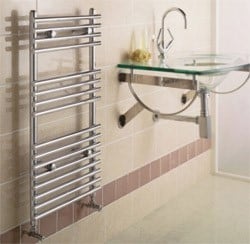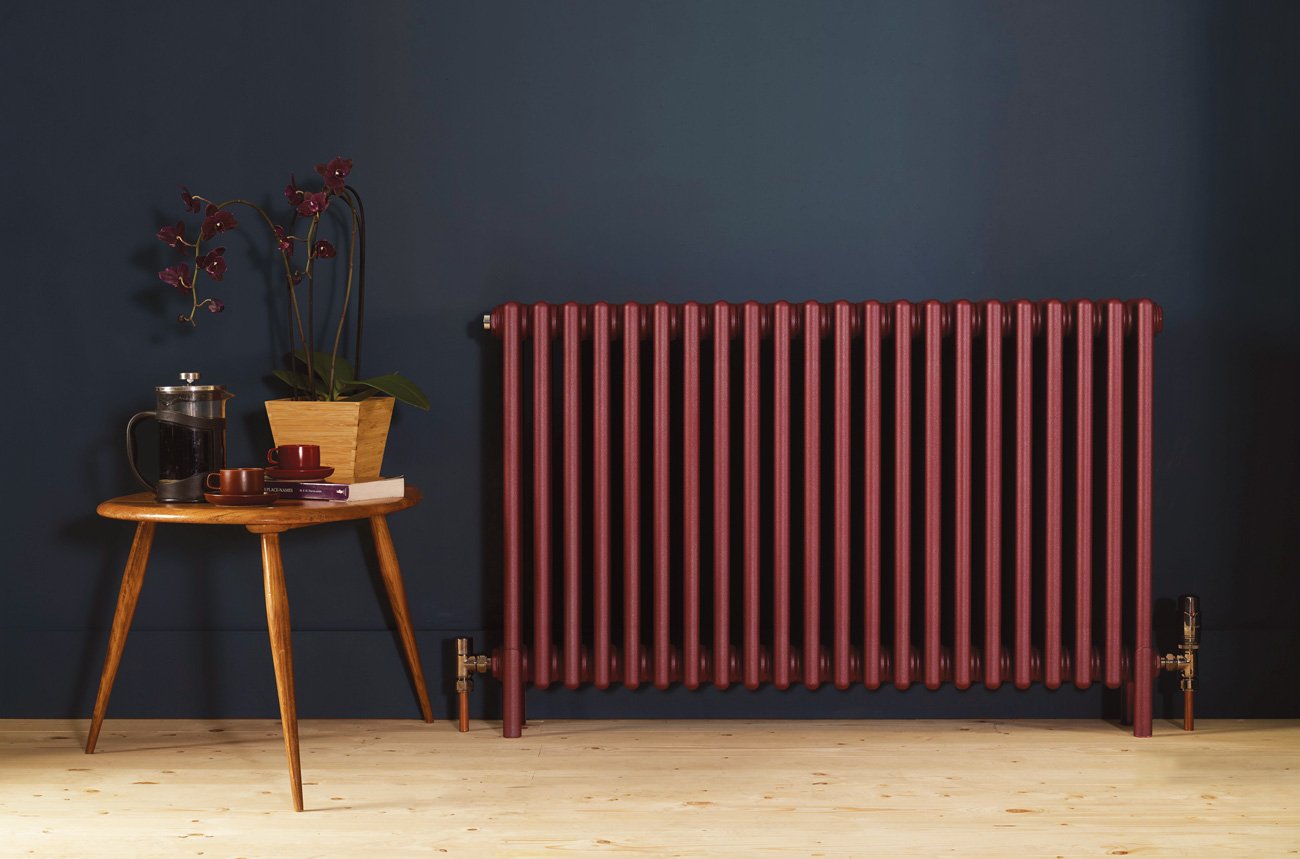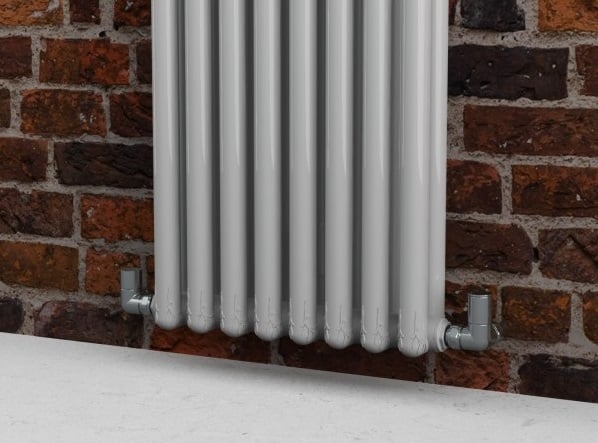Which Radiator Valves – Angled or Straight?
Purchasing your new radiator can turn out to be more difficult than it might appear at first. One common question we face at RSF Bathrooms, tends to be ‘which radiator valves?’.
Once you understand the basic difference between straight and angled valves, the choice becomes a lot simpler and hopefully this article will clear things up!

A Standard Pair of Straight Valves from Zehnder.
Straight radiator valves pass the central heating water along a ‘straight’ path from your pipework into the radiator.

A Standard Manual Pair of Angled Valves from Zehnder.
Angled radiator valves incorporate a 90° bend to achieve an ‘up or down and across’ flow.
The two things you’ll need to know:
1. The valve inlet positions on your new radiator
2. Where your heating supply flow and return pipes are being positioned
Valve inlet positions
Working out the position of the valve inlets on your new radiator should be relatively simple and can usually be assessed from the radiator image.
Standard towel warmers / ladder rails will usually have bottom inlets. The image below shows a typical installation with central heating pipes through the wall, using angled valves into the bottom of the radiator.

Standard compact radiators and traditional column radiators usually have side inlets. Yes, they are towards the bottom of the radiator but are side entry. The image below shows neat, through-wall central heating flow and return pipework which connects to the radiator with angled valves.

The below image of a stunning Bisque Classic radiator in Amethyst Quartz, has side inlets too, but can also be floor mounted with a set of feet. In this situation, a set of Angled Valves is required as the picture shows.


Designer radiators tend to vary depending upon the design – if the description doesn’t state the inlet position, take a look at the photo of the radiator. Failing this, contact the supplier to verify. The example above shows a Bisque Archibald towel radiator, which has inlets towards the bottom of the radiator. In this quite unique example, a set of Corner Valves (also known as Double Angled Valves) are used to create the look.

A Standard Pair of Corner Angled Thermostatic Valves from Zehnder.
Corner Valves (also known as Double Angled valves), can be used to create an alternative look or style from standard angled valves. You would only use Corner Valves when the pipework comes from the wall. They can be used to create an alternative look to a set of Angled Valves, as the direction of the TRV Head points at an additional angle.

Valve-Set-M from Bisque. A Corner / Double Angled Valve used on a radiator with bottom entry inlets. Image above.

Valve-Set-Z from Bisque. These are Corner / Double Angled Valves, and used on a radiator with side entries. The only difference between this and a set of Angled Valves, is the direction of the thermostatic head. Image above.
Central heating flow & return pipes
In the majority of installations, the positioning of pipework for the radiator will be a choice of through a wall or through the floor. Where central heating pipes have been retro-fitted along a skirting board, this can be treated as through the floor when deciding on the valve type.
Hopefully you now know the radiator valve positions together with your central heating pipework… the simple table below will now show which valve type you require:
| THROUGH WALL PIPEWORK | THROUGH FLOOR PIPEWORK | |
|---|---|---|
| Bottom Valve Inlets | ANGLED / CORNER | STRAIGHT |
| Side Valve Inlets | ANGLED / CORNER | ANGLED |
As you can see, angled valves cover 3 out of the 4 possibilities.
With all basic rules, there are bound to be exceptions so please use this guide with a certain amount of common sense.





